
Meet the herd – the eight wild bison on a wilding journey in Canterbury
Since bison were released into West Blean and Thornden Woods on the outskirts of Canterbury, they have not only transformed the landscape but significantly grown in number.

Where: Ramsgate
When to visit: All year round - winter for observing migratory birds
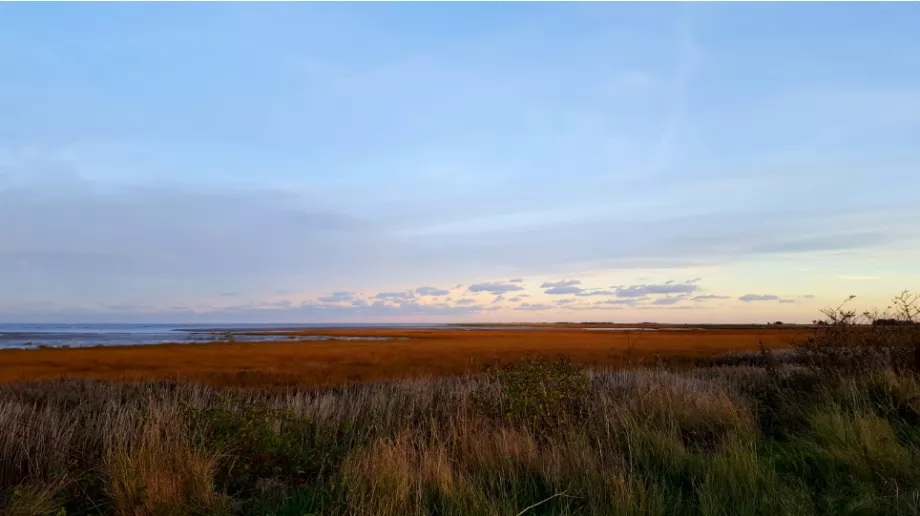
Sandwich Saltmarsh ©Vicky Aitkenhead
Sandwich and Pegwell Bay boasts saltmarsh and mudflats, sand dunes and coastal habitats. With an on-site café, toilets and playground, the site is perfect for families looking to connect with nature. The reserve is home to many internationally important and rare plants and animals, including the impressive lizard orchid, which was once thought to have gone extinct in the UK. Colourful cuckooflowers and clusters of yellow and orange birds-foot trefoil decorate the coastal paths that border the shore.
Bird enthusiasts can make use of the site’s well-situated bird hide, where shelduck, brent goose and black-tailed godwits can be spotted feeding. A glance to the sky above may reveal hovering kestrels and the occasional heron flying overhead. Listen carefully for the distinctive ‘peep-ing’ call of the oystercatcher, a coastal specialist that nests on the shingle beach. Pay a visit to the reserve at dusk and you may be fortunate to see a barn owl hunting for their dinner!
Around the coastline, populations of both grey seals and common seals may be seen bobbing around in the sea or resting on our sandbanks and beaches. These charismatic creatures are a joy to watch, so pack your best pair of binoculars! Both grey and common seals are sensitive to disturbance. For tips on viewing Sandwich’s seals responsibility, head to our page on how to watch seals safely.
Where: Sevenoaks
When to visit: May - November
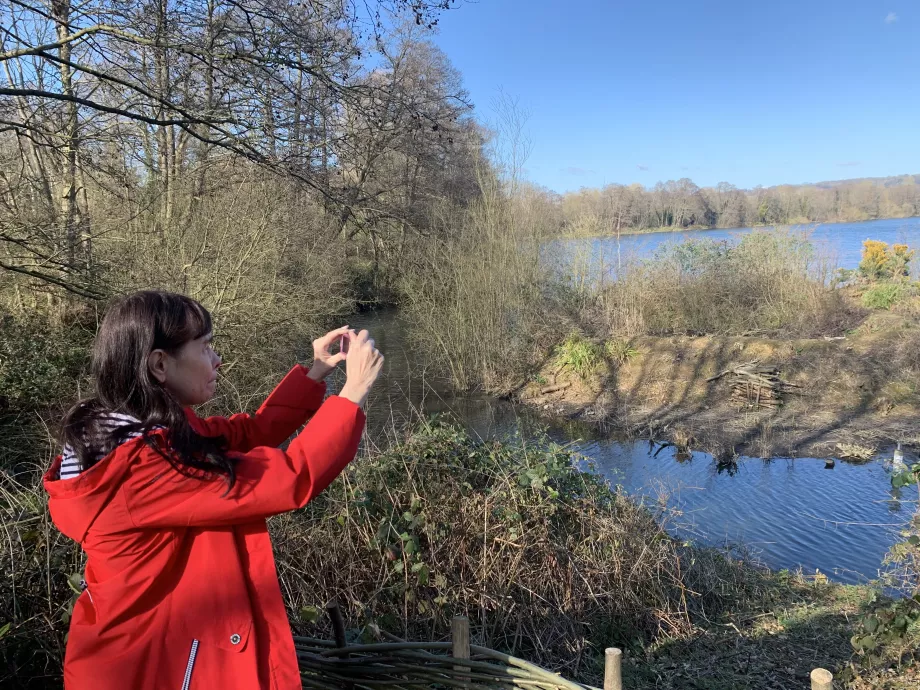
Arts Without Boundaries Nicky for Sevenoaks Greensand Commons
The Greensand Commons of Sevenoaks and Westerham share a rich history and have been a vital resource for local communities for generations. Dotted across an Area of Outstanding Natural Beauty (AONB), the sites feature some of Kent’s rarest habitats, including acid grassland, ancient woodland and lowland heathland. The latter is even rarer than Amazonian rainforest! In recent years, Kent Wildlife Trust’s Sevenoaks Greensand Commons Project has undertaken vital heathland restoration works on the sites to allow this valuable habitat to flourish.
There are eight sites to discover, but the avid walker can easily explore several in one visit. An invigorating trail can be walked through Fawke, Bitchet and Seal Chart Commons. Fawke Common sits adjacent to Knole Park. The woodland is home to ancient trees that support a wide range of insects, perfect for a family bug hunt! Decaying logs and fallen trees provide a feast to rare woodland beetles. A small pond near the roadside is used as a nursery for fluffy mallard ducklings in the spring, which can be seen darting through the pond plants.
In the spring, both Bitchet Common and Seal Chart benefit from a carpet of delicate bluebells. Several rare butterflies and moths, including the brindled beauty, buff ermine and deep-brown dart appear here, as well as more common but equally beautiful peacocks, brimstones, red admirals and speckled woods. The land surrounding Bitchet Common is home to adders, slow worms, grass snakes, frogs, toads, palmate newts and great crested newts, making it possible to encounter these elusive cold-blooded animals during your visit.
Seal Chart Common provides an excellent view of the wider landscape beyond the wood and is popular with flocks of chatty blue, great and long-tailed tits. Over 250 species of fungi have been recorded at Seal Chart and Redhill Wood, making it the ideal location for observing mushrooms in the autumn. Sandstone outcrops in the Seal Chart’s pockets of heath are used by many specialist animals, plants and fungi, particularly solitary bees. 11 of Kent’s 15 bat species have been recorded here too, so whether you are a fan of rare insects, funky fungi or mysterious British mammals, Seal Chart has something to offer every nature lover.
Where: Gillingham
When to visit: May - August
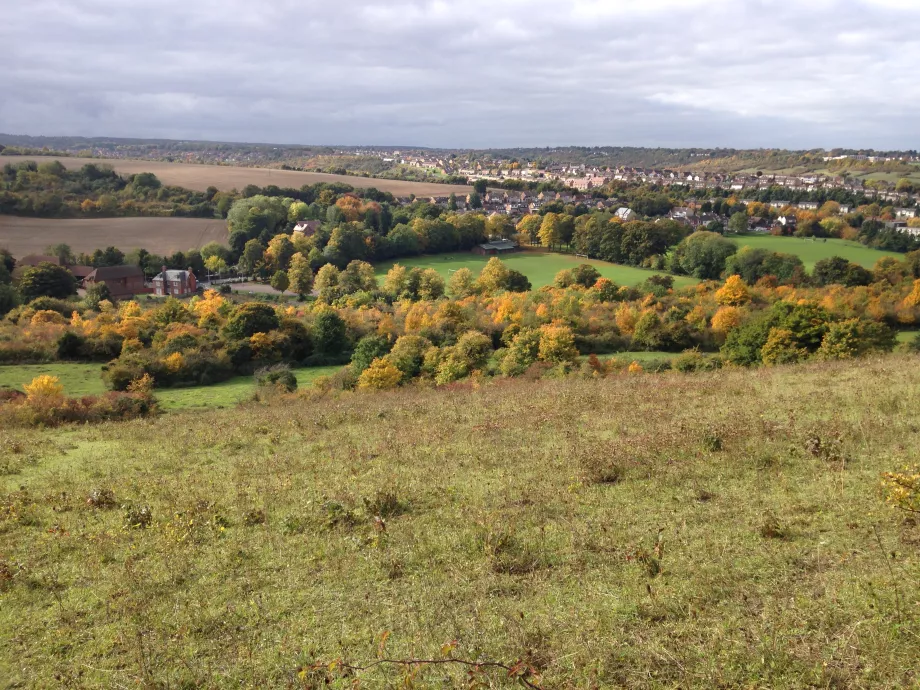
Darland Banks
Sweeping panoramic views are not what you expect to find in the heart of the Medway towns, but this site has long defied convention. Darland Banks is overflowing with plant life and is renowned for housing the UK’s largest population of man orchids. Butterflies, bees and a plethora of beetles flock to the banks, attracted by the many wildflowers that grow there. Green hairstreaks, small blues and Adonis blues are amongst some of the beautiful butterflies this site has to offer.
Comprised of a mix of restored chalk grassland and woodland, Darland Banks is a sanctuary to some of Kent’s most threatened plants and animals. The woodland provides a shady walk on a sunny day; visit the edge of the woodland that overlooks the grassy banks for a chance to spot a green woodpecker hunting for ants! Great spotted woodpeckers may be seen deeper in the woodland, or heard pecking at tree trunks on a mission for juicy grubs. Smaller species, such as chaffinches, wrens, blue tits and the vibrant yellowhammer can be observed too.
Where: Ashford
When to visit: All year round

New accessible footpath at Hothfield. ©Ian Rickards
A visit to Hothfield Heathlands is a visit to Kent's last four valley bogs and one of its few remaining fragments of open heath. Some 86-hectares of heathland, moorland, lowland dry acid grassland and wood pasture can be explored via four way-marked routes, including an accessible Triangle Trail. On this 500m long route, visitors can enjoy the reserve from a smooth, even surface path.
The site is grazed by cattle, ponies and sheep, including charming Highland cows. These animals play an important role in maintaining the area of wood pasture at the site, which is characterised by striking spreading oak and sweet chestnut. These old trees are exploited by great spotted woodpecker, nuthatch and spotted flycatchers, who nest in their nooks and crannies. Many of the trees have date back to the 19th Century, including giant redwoods which were brought to the reserve from North America in the 1850’s.
During the spring and summer, swathes of flowers bloom in open glades. Quintessential heathland species such as heather come to life, covering the landscape in pinks and purples. Peacock, comma and tortoiseshell butterflies are common visitors during this period. As you explore the reserve on foot, you may be struck by the sweet smell of coconut that is produced by golden bushes of gorse. Yellowhammers, white throat and willow warblers can be seen singing loudly and proudly from these prickly shrubs.
Where: Maidstone
When to visit: April - July, September - November
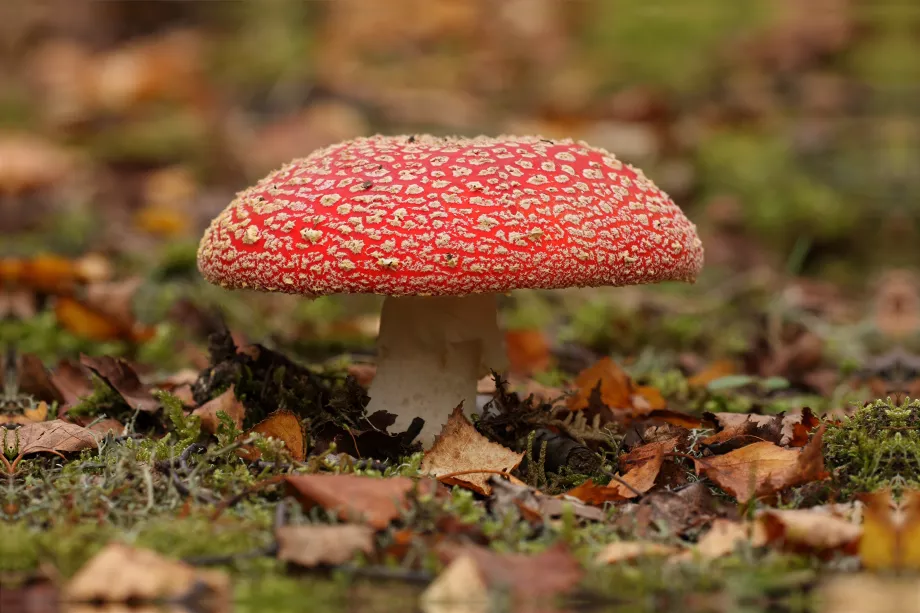
Westfield Wood Fly Agaric. © Greg Hitchcock
Westfield Wood presents a challenging yet rewarding walk through an internationally important yew woodland. Yews are one of the UK’s five native evergreen trees, and their large numbers at Westfield Wood create a still, quiet and cool woodland. Did you know that tree coverage can cool the air underneath by 2ºC - 8ºC? As you escape the summer sun, small mammals, insects, birds and reptiles will be taking advantage of the shade too!
The path that circumnavigates Westfield Wood takes visitors past several giant, ancient trees. Many of these mature oaks and beeches may appear gnarled and twisted, however, they provide an essential supply of standing deadwood to the surrounding habitat that supports fungi of all shapes, sizes and colours. While on your walk, look for fungi from the past autumn that may have been sampled by a hungry fox or badger.
The many holes and crevices found in the ancient trees of Westfield Wood provide shelter to nesting birds and roosting bats. Long-tailed tits, nuthatches, chaffinches, robins, great tits, blue tits, rooks, crows, and the UK’s smallest birds, the goldcrest, can be observed here. Visit Westfield Wood at dusk or dawn to enjoy a melodic performance from the woodland’s songbirds.

Since bison were released into West Blean and Thornden Woods on the outskirts of Canterbury, they have not only transformed the landscape but significantly grown in number.
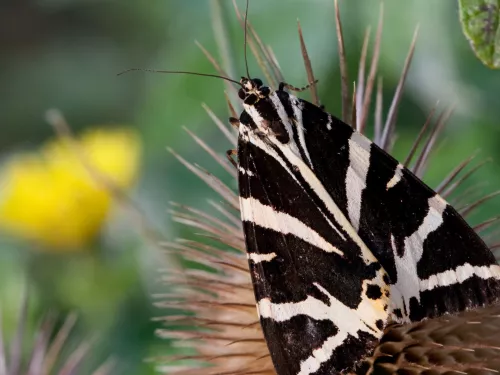
Margery Thomas, Hothfield Volunteer and regular columnist looks at the lack of butterfly sightings in recent months, the work volunteers are doing to remove bracken and how this all impact the wider management of the last remaining fragments of heathland…
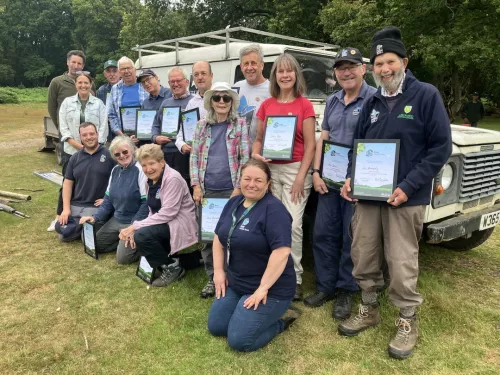
By August, floral glory has passed from the orchids (heath spotted, southern marsh and a few large hybrids) to the heather or ling. As ever, we hope for a protracted display of purple in the heathy areas, which is likely if the cool nights persist. Orchid…